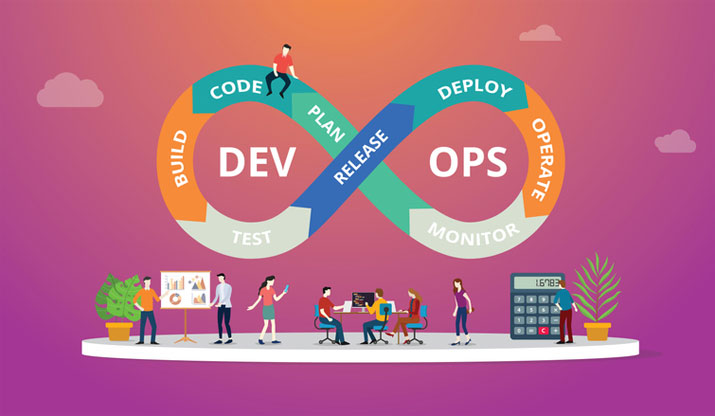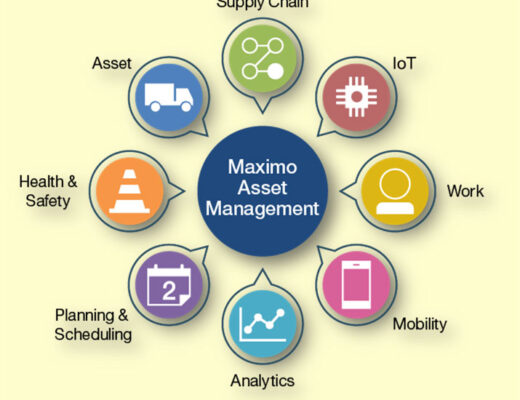Importance Of Software Development Life Cycle , An application development life cycle (ADLC), also known as software development life cycle (SDLC), is a plan or a process that outlines the phases needed to build software. It’s a step-by-step strategy, which needs to be followed to build and design high-quality IT systems. The phases of the application development life cycle explain and narrate how to develop, conserve and enhance particular software. The major aim of the development life cycle is to design and develop good-quality products.
What Importance Of Software Development Life Cycle?
Table of Contents
The importance of software development life cycle directly show-case every single task, needed to assemble a software application, which helps in reducing waste and increasing the coherency of the development process. It works by toning down the cost of software development, whilst concurrently upgrading the quality and lessening the production time.
Also Visit – Why PHP is Still a Popular Programming Language among Developers
After that, it represents the requirements of the new system. It then generates the software through the phases of analysis, planning, design, development, testing, and deployment.
Why is Software Development Life Cycle Important?
- project manager run production without having to micromanage the members of that project.
- The software development cycle makes it easy for IT experts to figure out what the problem is. While doing big projects, it gets way too easy to get ahead of yourself. importance of software development life cycle makes it easy to see the problems distinctly. In this way, the plan is executed with relevance.
- It helps in alleviating the complexity of designing and developing an IT system from scrape, inside a framework of arranged phases that assists in shaping the project and maintaining it easily.
- Another importance of software development life cycle is that it helps in transforming the idea of the project into an actual functional and completely operational system.
- It also helps in planning ahead of time and analyzing the phases and goals of software projects.
- The development cycle provides you a well-written and well-organized documented paper, which consists of the trail of the whole project that is out-and-out with records of every single thing that occurs.
- The above-mentioned point brings us to our next main reason, without the paperwork, new members will have to start from the beginning, even more, they may even have to change the project to grasp the concept of it.
Phases of Software Development Life Cycle:
Planning
In the Software development life cycle, planning is the most pivotal stage. Planning involves identifying and representing the project scope to determine a thorough action plan for the project and highlight the problems and the solutions. This phase also showcases what will happen all around the entire life cycle and calculates the success of the whole project. Other factors that are accounted for in this phase are Team structure, time frame, budget, security, etc. This important phase helps in setting the tone for the overall success of the project.
Analysis
Now that the plan is concluded and the team is established. We’ll move towards our next phase, which is analysis. The team now is required to carry out an analysis of the system’s functional obligations to make sure that it will meet the expectations of the targeted audience. After that, those expectations are settled and documented. Next, feasibility is performed to ensure that a system makes sense from the financial, technological, and organizational points of view.
Design
Importance Of software development life cycle, As the analysis phase is finished and the requirements are in place, we move towards the designing phase. In this phase, we discuss how to approach the system’s architecture design, user interface (UI), databases, networks, and security so that they will satisfy the needs and wants and enable updates for the future. If we fail at this stage then we’ll have to deal with cost overruns and the collapse of the project at worst.
Development
Importance Of software development life cycle, the development phase hallmarks the end of the introductory part of the process and reveals the start of the production. After that, the software engineers write code and make adjustments to the technology involved in the project (which can include hardware, For example, Any IT project). This phase is most likely the busiest phase of the life cycle, as it involves a lot of critical steps and hard work from all the experts, which are involved in it.
Integration and Testing
In this phase, we do the testing and integration of the system, and all procedures and methods related to assessing, or if it performs according to our calculations and completely delivers on the desired requirements. We test for imperfections and shortcomings as well and fix or repair them until the project meets the original designation. For this phase, the quality assurance (QA) team is in charge.
Release and Maintenance
This is the final phase of the software development life cycle. After the project is permitted to release from the QA team, it then escorts to the production environment. During this phase, the project is either released to be used or it is installed by end-users.
Then comes maintenance, in the maintenance phase, the end-users can fine-tune or make improvements to the system, to increase performance, to add new features, potentialities, or new requirements brought by the client. This phase makes sure the system relevant, applicable, and workable by replacing the old hardware, upgrading the software, estimating performance, and putting in new updates to ensure it meets all required standards and also contains the latest and newest technologies to face cybersecurity threats.
Importance Of Software Development Life Cycle Models
The most common development models are listed & explained below:
1. Waterfall Model
This is probably one of the oldest, mature & straightforward models. It is also known as the “traditional methodology” In this type of model, we complete one phase and then begin the next phase. Every single phase in this model has its own “mini-plan” and each phase waterfalls into the next phase. In waterfall, we follow this approach: requirements -> design->, execution->, testing->, and then -> release.
2. Rapid application development (RAD)
It is a versatile methodology that puts less accentuation on arranging and more accentuation on a versatile cycle. As a rule, models are utilized in RAD to substitute plan details. RAD is viewed as quite possibly the most well-known SDLC model for programming that is driven by UI necessities. RAD was made as a reaction to the arrangement-driven Waterfall philosophy that plans and fabricates things nearly as organized as finished with a structure from its starting point. RAD is about quick prototyping and iterative conveyance that falls into the parental classification of Agile.
3. Prototyping
It creates prototypes of the software application to simulate the functional aspects of the desired end product. The main purpose of prototyping is to visualize the components of the software solution to ensure that the end product meets the customer’s requirements. Many prototyping variants exist, but they are mainly classified as waste and evolutionary. Throwaway prototyping creates a template that will ultimately be rejected. And Evolutionary prototyping refers to a robust prototype that will be continuously refined to its final release.
4. Spiral
The spiral methodology may be considered as a combination of Waterfall methodology and prototyping methodology. This is generally the preferred methodology for large complex projects, as it uses the same steps as the Cascade methodology, but they are divided into planning, risk assessment, and prototype construction.
5. Agile
The iterative and incremental methodology are acknowledged for excellence, Agile is a framework that evolves through team-to-team collaboration. It is a dynamic and interactive method that works in sprints with a defined time to produce light deliverables that help diminish the time where programming is delivered. It advocates for versatile arranging, transformative turn of events, early conveyance, persistent improvement, and fast and adaptable responsiveness to changes.
6. Iterative and incremental
The iterative and gradual approach is intended to fix any shortcomings or flaws in the Waterfall methodology. The iterative and gradual approach starts with preliminary preparation and ends with solution deployment, with cyclic interaction in between. In turn, it creates a software application through iterative and repetitive processes that are done incrementally so that developers can benefit from previous portions of the software’s creation.
7. V model
This technique is an extension of the Waterfall methodology, but instead of flowing down linearly, the steps are structured to form a V shape. The relationships between each step of the product life cycle are correlated with a testing phase in this approach. The horizontal and vertical axes represent time or project completion (from left to right) and abstraction level (coarsest-grain abstraction).
These methodologies may be combined to create a hybrid approach that best suits the needs of a particular project. Typically, companies depend on System Analysts’ expertise to determine and pick the best methodology or combination of methodologies to use for a particular project.
Agencies That Provide The Best Team For Software Development Life Cycle To Build Your Project:
Badly developed projects do not make a lasting impression on the public. On the other hand, a project that has been coded & built correctly & according to the importance Of software development life cycle can build trust without effort.
There are also many websites and online organizations that offer multiple services, like the one we are discussing at the moment (i.e. Software development life cycle) to assist you in setting up your own company.
iCreativeSOL is responsive web design agency with global capabilities across website design & development, digital marketing & branding. They provide the following services:
- Web Design & Development
- Logo Design
- Digital Marketing
- Brand Development
- SEO Services
- Motion Graphics
- Mobile App Design & Development
- And much more at a very reasonable price.
iCreativeSOL is involved in the creation of excellent web design and development for their customers and differentiates between code and excellent code. With strong experience in consulting and technology development, it employs more than 50+ specialists who support a wide range of customers and partners, including large companies and start-ups. With over 310+ satisfied clients, it offers a full development of custom web and mobile applications.
The developers & all the other experts involved in these developing phases at iCreativeSOL are professionals that turn your desired projects and your ideas into stylish and fully functioning digital solutions. They see every project as a new challenge that has to be addressed with their incredible clients.
Now, in the following section, we will look at the System Analyst position and how their valuable skill set can help you.
Who is the System Analyst?
A System Analyst is someone who understands research and design methods for using computer technology to solve business problems. System analysts also recognize problems or areas of opportunity that can be addressed to produce organizational improvements as well as the necessary structures to achieve goals. Overall, the System Analyst should be a specialist with interpersonal skills, technical skills, analytical skills, and management skills.
The System Analyst is an IT specialist who performs high-level system reviews to ensure that processes, infrastructures, and computer systems are operating effectively and efficiently. System analysts investigate issues, discover solutions, propose a course of action, collaborate with stakeholders, choose tools, and create action plans to achieve an objective and fulfill pre-defined criteria. They are experts at researching a method, process, or technique to find the best solutions.
Also Visit – List of Top 10 Best Email Apps For Android
System Analysts should ideally be highly qualified and competent in a wide range of operating systems, hardware configurations, programming languages, and software and hardware platforms. They are typically active in the early stages of a project and continue into the post-evaluation analysis of the solution. In essence, System Analysts are experts who can assist in the transformation of requirements into technical design specifications, and their primary responsibility is to understand and decide how to solve a problem using various platforms, protocols, software, and hardware, and communication outlets.
Mobile Development Software Life Cycle
The importance of software development life cycle for mobile development is essentially similar to that of web or desktop applications. As with those, there are usually five major stages to the process:
1. Inception
Every app begins with an idea. Typically, the concept is distilled into a solid foundation for an application.
2. Design
The design process entails describing the app’s User Experience (UX), such as what the general layout is, how it functions, and so on, as well as translating the UX is typically translated into a proper User Interface (UI) template with the help of a graphic designer.
3. Development
Importance Of software development life cycle, It is the actual building of the application and it is usually the most resource-intensive process.
4. Stabilization
Importance Of software development life cycle, When the development has progressed enough, QA will normally begin testing the application and fixing bugs. Sometimes, an application will enter a restricted beta period in which a larger user community is allowed to use it, provide input, and notify changes.
5. Deployment
Many of these pieces frequently overlap; for example, production may be ongoing while the UI is being finalized, and it may also inform the UI design. Furthermore, an application may enter a stabilization phase at the same time that new features are introduced to a new version.
Furthermore, these steps can be used in any importance of software development life cycle methodology, including Agile, Spiral, and Waterfall.
Conclusion It is critical to follow the importance of software development life cycle if a new project or process of a software project is announced. As a result, teams establish a structured approach to developing new solutions to emerging issues in a controlled and standardized manner. Before starting a new project, it is critical to determine how the importance of software development life cycle can cover and fulfill the overall requirements. For more information about importance of software development life cycle contact Websolindia.



